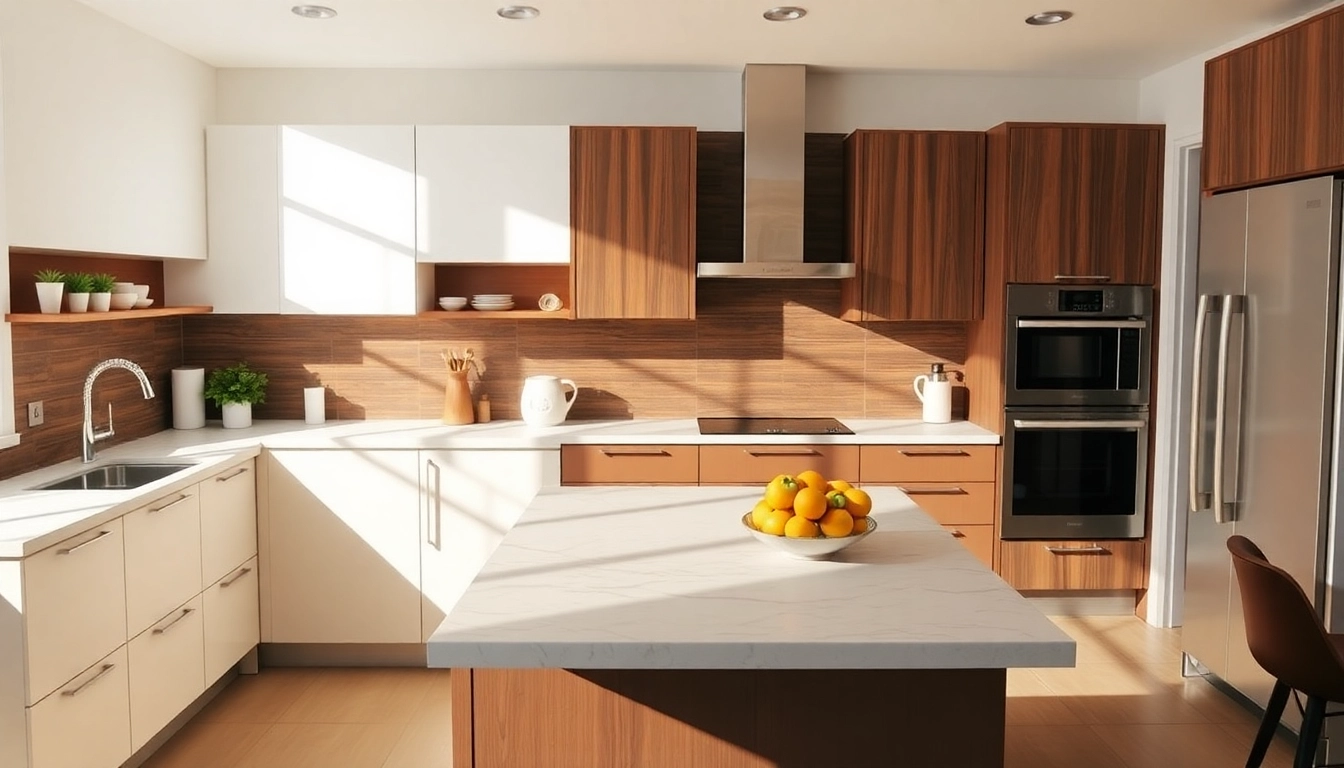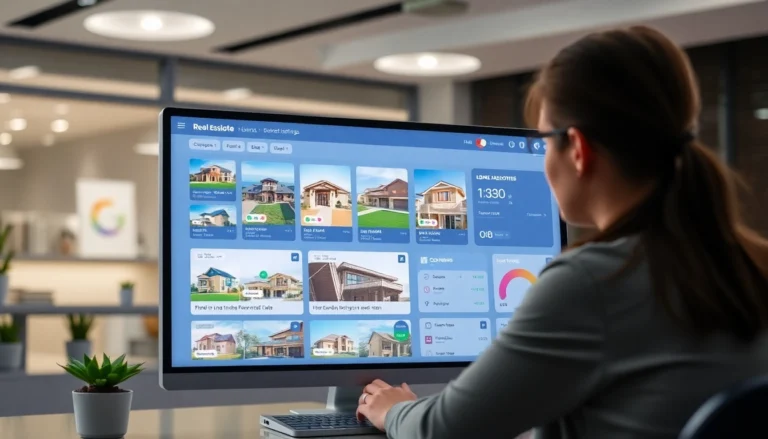Understanding Remodeling: Definitions and Key Concepts
Remodeling is a transformative process that involves modifying or altering a property’s structure, form, or style to enhance its functionality, aesthetic appeal, or value. The term itself is often used interchangeably with renovation; however, understanding the nuances between these concepts can help homeowners and property managers make informed decisions. According to the Collins Dictionary, remodeling refers to the act of changing or altering something’s structure or style—a broad term that encompasses a wide range of home improvement activities.
When homeowners consider remodeling, they typically aim to address specific needs—such as increasing space, modernizing appearance, or improving energy efficiency. These projects can range from simple cosmetic updates to complete structural overhauls. For those unfamiliar, consulting with experienced professionals ensures that your remodeling endeavors align with your goals, budget, and timeline.
What Does Remodeling Entail?
At its core, remodeling involves reconfiguring a part or all of a home’s interior and/or exterior to achieve a new design or functionality. It could include tasks like knocking down walls to create open-concept living spaces, adding or replacing windows, installing new flooring, or upgrading kitchens and bathrooms with modern fixtures and appliances. Remodeling extends beyond mere cosmetic improvements; it may require engineering assessments, permits, and adherence to local building codes.
For example, transforming a cramped kitchen into a spacious culinary hub might involve relocating plumbing, electrical systems, and HVAC components, alongside aesthetic upgrades. The goal is to improve both form and function, creating a living environment tailored to contemporary lifestyles.
Differences Between Remodeling and Renovating
Many people use the terms remodeling and renovating interchangeably, but they represent distinct processes with different scopes. Renovation generally refers to restoring or updating a space to a better condition without altering its structural elements. It might include painting walls, replacing fixtures, or refinishing surfaces. Remodeling, in contrast, involves changing the original structure or layout of the building.
For instance, renovating might involve repainting a room or replacing old flooring, while remodeling could include removing a wall to create an open plan or building an extension. Both activities can significantly influence a home’s market value and functionality, but remodeling typically requires more comprehensive planning and permits.
Understanding this distinction helps prioritize your project scope and budget. If your goal is to modernize appearance without structural changes, renovation might suffice. But for layout or space transformations, remodeling becomes necessary.
Common Types of Remodeling Projects
- Kitchens: One of the most popular remodeling categories, kitchen upgrades include installing new cabinets, countertops, appliances, and lighting to improve aesthetics and functionality.
- Bathrooms: Upgrading fixtures, tiles, vanities, and adding features like walk-in showers or tubs enhance comfort and value.
- Basements: Converting unfinished basements into living spaces, home theaters, or rental units opens up additional usable area.
- Home Extensions: Adding new rooms or expanding existing spaces to meet growing needs or increase property size.
- Exterior Improvements: Replacing siding, roofing, windows, or landscaping to boost curb appeal and exterior durability.
Each project type requires specific planning considerations, from structural assessments to selecting appropriate materials that match your home’s style and your sustainability goals.
Planning Your Remodeling Project: From Concept to Execution
Assessing Your Home’s Needs and Goals
Effective planning begins with a thorough assessment of your home’s current condition and your personal goals. Ask yourself: What are the primary reasons for remodeling? Are you seeking increased space, improved energy efficiency, better functionality, or aesthetic updates? Identifying these priorities helps define the project scope and guides decision-making.
Consult with family members, and consider future needs—such as aging-in-place modifications or accommodating a growing family. Conducting a detailed property inspection and gathering quotes from multiple contractors can reveal structural issues or hidden costs that impact your planning.
Budgeting and Cost Estimation
Budgeting is one of the most critical elements in successful remodeling. It involves estimating costs for materials, labor, permits, and contingency funds. According to industry data, homeowners typically allocate between 10-15% of the project budget for unexpected expenses, which often arise during construction. For example, discovering outdated wiring or plumbing during a remodel may necessitate additional repairs.
Develop a comprehensive budget based on your project scope, with clear priorities. Use tools like detailed quotes from licensed contractors and historical cost data for similar projects in your area to avoid overspending. This step ensures that financing options—whether savings, loans, or credit—align with your planned expenditures.
Selecting Qualified Remodeling Contractors
Choosing the right contractor is pivotal for project quality and timely completion. Look for licensed professionals with proven experience in your project type, supported by positive references and a portfolio of completed work. Local contractors often have better knowledge of regional building codes and warranty systems.
Interview multiple firms, request detailed proposals, and verify their insurance and licensing status through sources like the Better Business Bureau or state licensing boards. Effective communication and shared understanding of project goals foster a smoother remodeling process. To find reputable contractors, consider references from local industry directories or trusted online platforms.
Design Trends and Best Practices in Remodeling
Popular Styles and Materials
Current remodeling trends emphasize minimalist design, natural materials, and personalization. Popular styles include modern, farmhouse, industrial, and transitional aesthetics. When choosing materials, homeowners are increasingly opting for sustainable options like reclaimed wood, bamboo flooring, and low-VOC paints.
Finishes such as matte fixtures, quartz countertops, and large-format tiles are favored for their durability and sleek appearance. Incorporating smart home technology—like automated lighting or thermostats—also aligns with contemporary trends, adding convenience and energy-saving benefits.
Energy Efficiency and Sustainability
Energy-efficient remodeling not only reduces utility bills but also minimizes environmental impact. Upgrading insulation, installing high-efficiency HVAC systems, and incorporating solar panels are effective strategies. ENERGY STAR-rated appliances, LED lighting, and water-saving fixtures are essential components of sustainable renovations.
Implementing these features can significantly increase your home’s market appeal and reduce your carbon footprint, aligning with global sustainability initiatives.
Handling Unexpected Challenges
Despite meticulous planning, remodeling projects often encounter unforeseen issues such as hidden mold, termite damage, or outdated wiring. A proactive approach involves building contingency funds and maintaining open communication with your contractor to address challenges swiftly.
Regular inspections during construction, detailed change orders, and adherence to safety protocols help mitigate delays and cost overruns. Employing a project manager or experienced contractor can ensure challenges are managed efficiently, maintaining project momentum.
Maximizing ROI Through Strategic Remodeling
Home Value and Market Appeal
Remodeling can substantially increase your home’s market value when aligned with local market demands. Key features valued by buyers include modern kitchens, upgraded bathrooms, open floor plans, and energy-efficient appliances. A well-executed update can yield return on investment (ROI) percentages often exceeding 70-80%, according to multiple real estate studies.
For instance, kitchen remodels typically offer high ROI, especially when they include quality cabinetry and countertops, modern appliances, and attractive lighting. Before beginning a project, research comparable properties in your neighborhood to ensure your improvements are competitive.
Feature Additions That Boost Resale
- High-end kitchen appliances and fixtures
- Luxurious master bathrooms with spa-like features
- Energy-efficient windows and insulation
- Enhanced curb appeal with landscaping and exterior paint
- Open floor plans that maximize space and natural light
Strategically adding these enhancements during a remodel can make your property more attractive and increase resale value.
Timing and Seasonal Considerations
The ideal timing for remodeling depends on various factors, including climate, contractor availability, and personal schedules. Typically, spring and fall offer favorable weather for exterior work, while interior projects can be scheduled year-round.
Avoid peak seasons when contractor availability may be limited or costs are higher. Planning ahead and aligning your project timeline with seasonal benefits ensures smoother execution and better pricing.
Measuring Remodeling Success: Performance and Satisfaction
Project Completion Checklists
Establishing a comprehensive checklist helps ensure all project components meet specified standards. This includes verifying that all agreed-upon work has been completed, inspections are passed, and necessary documentation is in place. Confirm that electrical, plumbing, and structural elements adhere to codes.
Post-Remodeling Maintenance Tips
Proper maintenance preserves your remodeling investment. Regularly inspecting for water leaks, cleaning HVAC filters, and scheduling periodic inspections of roofing and foundation are critical. Keeping warranties and manuals for appliances and fixtures accessible simplifies ongoing upkeep.
Gathering Feedback and Future Improvements
Soliciting feedback from family members and future occupants provides insights into the functionality and aesthetics of your remodel. Use this information to plan future updates or refinements, creating a continuous improvement cycle for your home.


















